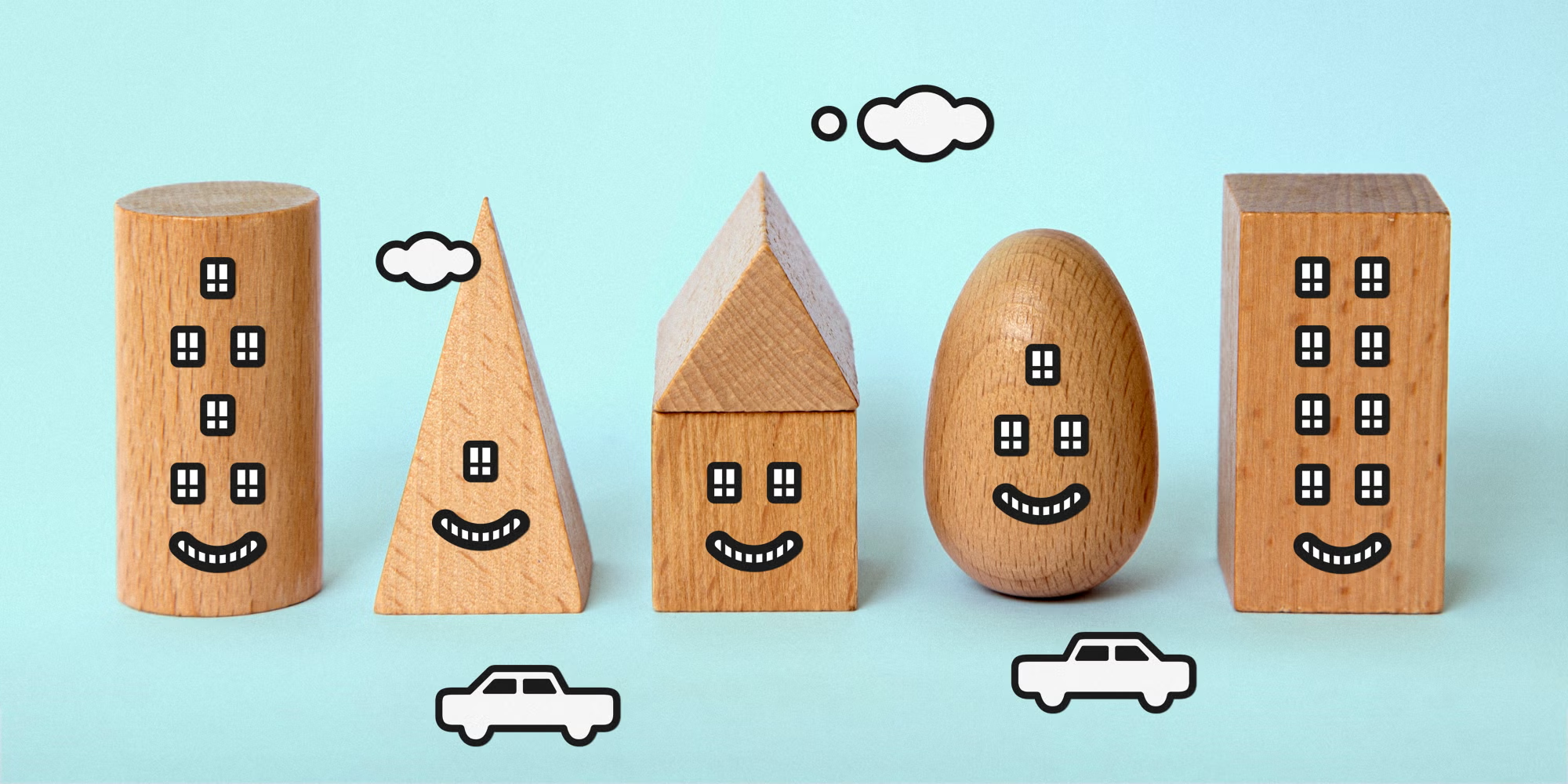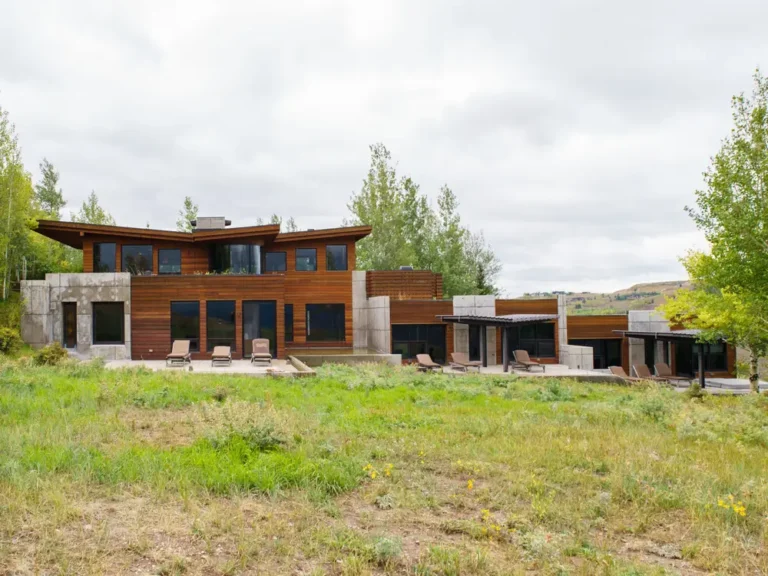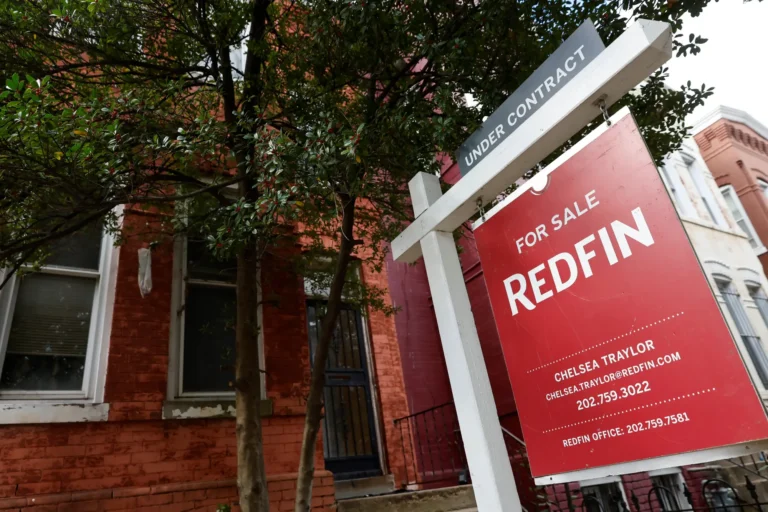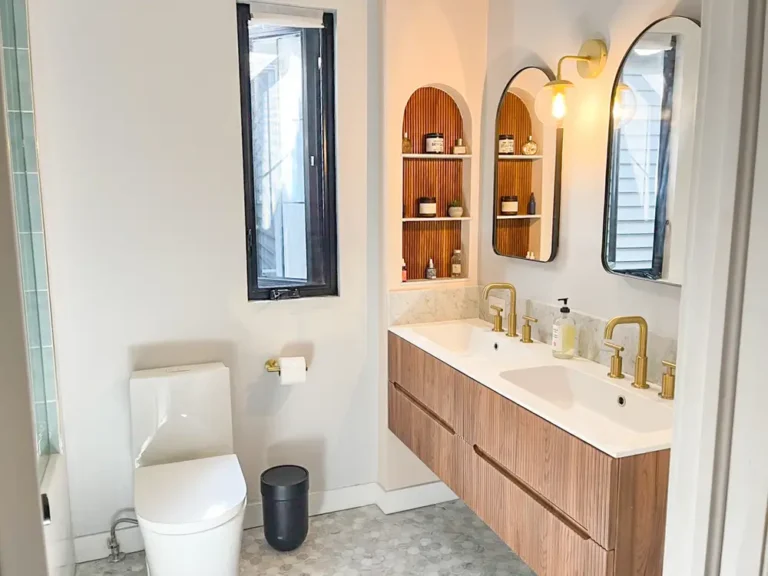America needs more weird homesThese five outside-the-box ideas could bring down home prices.

There’s a classic joke about two old ladies complaining that a local restaurant has terrible food — and portions that are way too small. You could say something similar about housing in much of the United States: The homes on offer are dull, uninspiring, nearly identical, and in far too short supply.
While the cookie-cutter sameness of American abodes and the worrying lack of new construction seem like two distinct issues, they actually go hand in hand. Local building codes and other land-use regulations have imposed strict limits on the size and shape of new housing, leading to both a major supply crunch and a deadening aesthetic uniformity of the housing that does get built. On most residential land, developers can legally build only detached single-family housing — usually with a big yard out front. While there’s nothing wrong with wanting to live in that housing, people who prefer something different have few options. And in high-demand areas, working-class and low-income people increasingly have no options at all.
It doesn’t have to be this way. The single-family home need not be the sole legal construction option. If we introduce more flexibility into the design rules for housing construction, we could end up with a wide variety of housing across our cities — something for everyone to meet every household’s needs. We have the power to make homes weird again.
A history of sameness
In the years following World War II, the sameness of American housing was part of what fueled the boom in new home construction that turned the country into a homeownership society. In the planned community of Levittown, New York, and its imitators, developers quickly assembled thousands of nearly identical single-family homes for returning GIs and their families. Because these homes were so similar, builders could mass-produce them with prefabricated materials, almost as if they were 3D printing an entire community from one set of floor plans. Though this homogeneity would later invite disdain — see the 1962 song “Little Boxes” — it held down construction costs, which allowed developers to offer the homes for sale to young families at affordable prices.
The trouble started in the latter half of the 20th century because cities decided to enforce that sameness. Instead of letting developers build the type of housing best suited for an area, many cities set a normative standard that the detached single-family home was the home for everyone, regardless of their income, preferences, and family configuration. And when local governments insist that this is the only type of housing one can legally build in most of the city, they limit how many residents that city can comfortably accommodate. Take Los Angeles, where about three-quarters of residential-zoned land in 2021 was zoned exclusively for developing single-family housing. The results have been predictable: LA has a severe housing shortage, a devastating homelessness crisis, and the worst overcrowding in the country.
Many local governments go beyond the single-family-house mandate and set strict rules regarding the design of the house, the amount of parking space in each garage, and even the size of the lot on which the house sits. The website for the pro-housing group Desegregate Connecticut says that “81% of residential land in Connecticut requires about 1 acre per home, and 49% requires about 2 acres per home (a football field and a half!).” That means the Levittown homes, which sit on 6,000-square-foot lots, would be illegal to build in the vast majority of Connecticut. Even in the rare spots where developers are allowed to build multifamily housing, they’re often strictly limited in the type of apartments they can build. The much-loathed 5-over-1 apartment building became so prevalent in part because it conforms to objective design standards, minimum parking requirements, and the common legal requirement that multifamily buildings over a certain size have multiple staircases. These rules make apartment buildings larger than they need to be and unnecessarily expensive to build. Plus, they can be built with only a limited number of floor plans, making it harder to include “family-sized” apartments with three or more bedrooms.
This country needs to build more homes, but there’s no reason all those new homes need to look the same. In fact, we’ll get a lot more of the housing we need if we allow for more experimentation with housing types in our cities. In other words, we need to let homebuilders get a little weird.
Weird is good
For a sense of what “weird” could look like, look at metropolitan Tokyo, a region that has done an excellent job of controlling housing costs even as its population has nearly quadrupled since the end of World War II. Tokyo has homes in all shapes and sizes: detached single-family homes, attached row houses, small apartment buildings, midsize apartment buildings, and colossal residential high-rises. Spend some time in the area and you’ll notice that these homes also come in a variety of architectural styles — a far cry from the enforced uniformity of many American cities.
There’s a reason for all that heterogeneity: Unlike nearly every American city, Tokyo has a loose approach to land-use regulation. An American city may have hundreds of zoning classifications, but the entire country of Japan has only a baker’s dozen: eight residential zones, two commercial zones, and three industrial zones. This zoning is, for the most part, organized vertically: Any lot that permits a certain type of use also allows other uses of equal or lower intensity. For instance, it is legal to build a house, or a house with a small attached shop, on most lots, except for certain industrial ones.
These rules do not come with the arbitrary aesthetic standards you find in many American cities. But instead of being chaotic, Tokyo’s blend of disparate building types and architectural styles makes the city more visually interesting to pedestrians. There’s even some evidence that this variety is better for the physical and mental health of residents, who are less likely to get bored or depressed on their daily perambulations. But perhaps the most important benefit of Tokyo’s flexible land-use rules is that they allow builders to quickly respond to changing demand and market pressures. No wonder Tokyo has stayed largely affordable even as other global cities have run into major supply crunches. In Japan, the average household spent 11% of its after-tax income on housing in 2022. Meanwhile, more than 42 million American households spent more than a third of their income on housing costs — and that number keeps climbing.
We don’t need to make every American city look like Tokyo to relieve our housing crisis, but we could learn from Japan’s willingness to let developers and architects get a little weird. Some low-hanging fruit for building variability is right there in front of us:
- Allow the building of accessory dwelling units: More places can follow California’s lead and allow the construction of ADUs — smaller homes that usually share a lot with a single-family structure. These small structures allow homeowners to add a small rental property in their backyard or a little garden apartment for a relative.
- Allow apartment buildings with one staircase: Making it legal to build more apartment buildings with only one staircase would substantially reduce construction costs and allow for apartment buildings to be built on smaller lots. It would also lead to the construction of more family-friendly apartments.
- Streamline outdated elevator codes: As the building-codes guru Stephen Smith of the Center for Building in North America recently wrote for The New York Times, elevators in the United States “have become over-engineered, bespoke, handcrafted and expensive pieces of equipment that are unaffordable in all the places where they are most needed.” Aligning American elevator codes with European standards would allow for smaller, cheaper elevators.
- Eliminate minimum parking requirements: Many cities require developers to include a certain number of off-street parking spots per housing unit — even if they’re building in a walkable area or near public transit, meaning residents wouldn’t necessarily need to drive. Removing these mandates would allow developers to respond to market demand for parking, or lack thereof, and experiment with constructing parking-light or no-parking multifamily buildings.
- Legalize cohousing: Boardinghouses and single-room-occupancy hotels, where residents had private bedrooms but potentially shared bathrooms and kitchens, used to be a common, naturally low-cost feature of many American cities. Now they’re illegal in much of the country — except for some (frequently decrepit) SROs that were grandfathered in.
In short, more flexibility is good. More flexibility leads to more weird. People who really like single-family homes should still have access to single-family homes. But people who need a lower-cost option, like a micro-unit apartment, should have access to that option. Multigenerational households should have the choice to live in a building that’s built for more than just a small nuclear family. Families who simply prefer apartments — maybe because they want to live in a central location or simply don’t want the hassle of caring for a lawn — should get a choice too.






